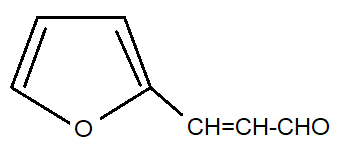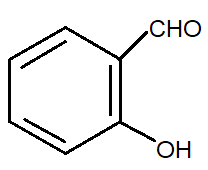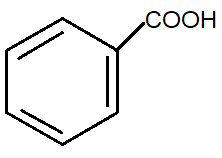Question
Question: An aromatic compound ‘A’ having molecular formula \({C_7}{H_6}{O_2}\) on treated with aqueous ammoni...
An aromatic compound ‘A’ having molecular formula C7H6O2 on treated with aqueous ammonia heating forms compound ‘B’. The compound ‘B’ in reaction with molecular bromine and potassium hydroxide provides compound ‘C’; having molecular formula C6H7N . The structure of ‘A’ is:
A.

B.

C.

Solution
In order to determine the structure of compound ‘A’ , firstly we will find the degree of unsaturation in every given compound. And also we know that bromine molecule and sodium hydroxide is Hoffmann Bromamide reagent which gives an idea that compound ‘B’ is an amide.
Complete step by step answer:
According to the question,
The molecular formula of compound ‘A’ is C7H6O2 :
So, degree of unsaturation of compound ‘A’ is : 5
Now, the molecular formula of compound ‘C’ is C6H7N :
So, the degree of unsaturation of compound ‘C’ is: 4
Now as per the question when C7H6O2 reacts with aqueous ammonia and heated then C7H7ON forms that is compound ‘B’ and the reaction takes place as:
C6H6O2+aq.NH3ΔC7H7ON
So, the degree of unsaturation of compound ‘B’ is: 5
The reagent used in the reaction Br2/NaOH is classic Hoffmann Bromamide reagent. And also according to the question compound ‘B’ is treated with Hoffmann bromamide reagent that means compound ‘B’ is an amide. As it consumes one degree of unsaturation. Compound ‘B’ has six carbon atoms and five hydrogen atoms then we can conclude that compound ‘B’ is benzamide.
Now, benzamide on Hofmann degradation gives aniline that is the formula of compound ‘C’. The reaction takes place as:
C7H7ON+Br2/NaOH→C6H7N
Generally, ammonia and heat on heating with carboxylic acid gives amide. This means compound ‘A’ is a carboxylic acid. So among all the options, option C is benzoic acid.
Hence, option C is correct.
Note:
When an amide is treated with bromine in an aqueous or ethanolic solution of sodium hydroxide, degradation of amide takes place leading to the formation of primary amine. This reaction involves degradation of amide and is popularly known as Hoffmann bromamide degradation reaction.
